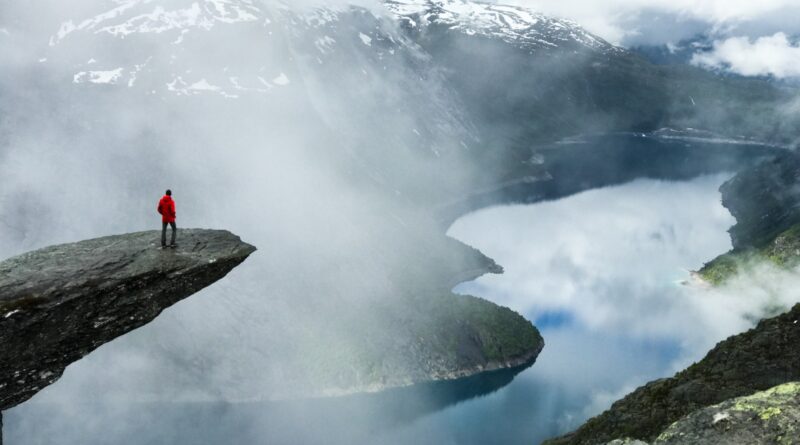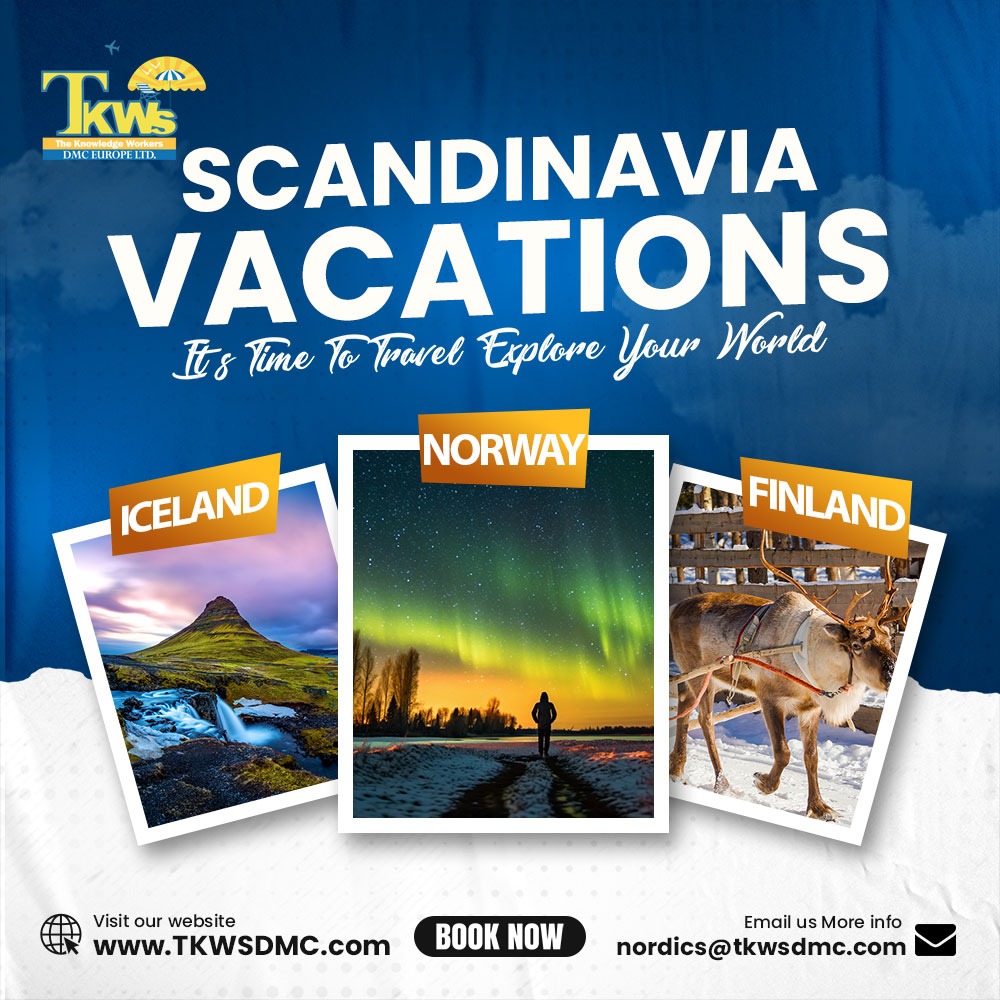Scandinavian vacations: Time to explore your world
Northern Adventures: From Finnish Waters to Icelandic Wonders and Norway’s Lofoten Roads
Whether you crave the stillness of gliding over glassy lakes, the power of thundering waterfalls, or the drama of Arctic coastlines, Northern Europe is a treasure trove of outdoor adventure. In this guide, we’ll take you through three unforgettable journeys: paddling through Finland’s Lakeland, road-tripping along Iceland’s iconic Golden Circle, and exploring Norway’s breathtaking Lofoten Islands.
Finland – A Tranquil Escape into Nature
Finland is a serene Nordic gem known for its endless forests, sparkling lakes, and peaceful pace of life. In the heart of the country, the Finnish Lakeland offers idyllic canoe and kayak adventures through mirror-like waters and untouched wilderness. From the Arctic magic of Lapland to the cozy lakeside saunas in the south, Finland is where outdoor adventure meets deep relaxation and rich cultural heritage.
Igloo Stay in Finland – Sleep Under the Northern Lights
Experience the magic of Finnish Lapland with an unforgettable igloo stay under the Arctic sky. These glass-roofed igloos offer a front-row seat to the Northern Lights, allowing you to drift off beneath a blanket of stars and dancing auroras. Surrounded by snowy forests and silent wilderness, an igloo stay combines comfort, romance, and the wonder of Lapland’s winter landscape.
- Exploring the Finnish Lakeland by Canoe or Kayak
Introduction to the Finnish Lakeland
The Finnish Lakeland is a vast network of over 180,000 lakes, interconnected rivers, and forest-clad islands, stretching across the eastern part of Finland. It is Europe’s largest lake district and offers endless opportunities for canoeing and kayaking in peaceful natural settings.
Unlike the high-adrenaline rapids of other destinations, Finnish waters are typically calm, making them perfect for all skill levels—from first-time paddlers to seasoned explorers.
Top Places to Paddle
Lake Saimaa: Finland’s largest lake, known for its labyrinthine channels, forested islands, and the endangered Saimaa ringed seal. The Kolovesi and Linnansaari National Parks are part of the Saimaa region and offer restricted motorboat access for a more serene paddling experience.
- Lake Paijanne: The second-largest lake, offering great routes with sandy beaches, cliff formations, and traditional summer cottages. You can explore Paijanne National Park and enjoy unique stopovers on islands like Kelvenne.
- Savonlinna Region: Ideal for cultural paddlers, this area offers access to medieval Olavinlinna Castle and multiple serene paddling routes around the town.
Wildlife and Nature Experiences
While paddling, keep an eye out for:
- Saimaa ringed seals (especially in Kolovesi)
- Ospreys and white-tailed eagles
- Moose near the water’s edge
- Peaceful pine and birch forests along the shorelines
The midnight sun in summer also adds a magical touch, allowing you to paddle into the quiet hours of the night with golden light.
Accommodation and Camping
Thanks to Finland’s “Everyman’s Right” (Jokamiehenoikeus), you can camp freely in nature, as long as you respect private property and clean up after yourself. Many islands in the national parks offer designated camping spots with firewood and toilets.
Alternatively, you can stay in charming lakeside cabins (mokki), which offer saunas, docks, and stunning views.
Best Time to Visit
- Summer (June–August): Warm weather, long daylight hours, and mosquito repellent a must.
- Early Autumn (September): Crisp air, fewer bugs, and incredible autumn colors.
Tips for Planning
- Rent kayaks or canoes from local outfitters in Savonlinna, Mikkeli, or Kuopio.
- Bring waterproof maps and GPS if venturing far.
- Pack lightweight camping gear and dry bags.
- Wear layers—even in summer, temperatures can fluctuate.
Respect nature: no fires outside designated areas, and always pack out your trash.
Iceland – The Land of Fire and Ice
Iceland is a realm of dramatic contrasts—where volcanoes, glaciers, geysers, and waterfalls collide to form otherworldly landscapes. Just a short drive from Reykjavik lies the iconic Golden Circle, showcasing the raw power of nature in every direction. Whether you’re soaking in geothermal hot springs, exploring lava fields, or hunting for the Northern Lights, Iceland invites you to experience its wild, untamed beauty up close.
Whale Watching in Iceland – Meet the Giants of the North Atlantic
Iceland’s rich marine waters are home to some of the world’s most majestic whales, making it a top destination for whale watching. From the charming harbor town of Husavik to Reykjavik’s coastline, visitors can spot humpbacks, minkes, and even blue whales breaching the waves. With dramatic fjords and midnight sun or snowy skies as your backdrop, a whale watching tour in Iceland is an unforgettable marine adventure.
- The Golden Circle: A Must-See Route in Iceland
Why the Golden Circle is Iconic
The Golden Circle is a 300-kilometer loop from Reykjavik that showcases Iceland’s stunning geothermal and geological wonders. In a single day, you can visit a national park straddling two continents, witness geysers erupting skyward, and stand beside one of Europe’s most powerful waterfalls.
Route Overview
The Golden Circle includes three major sites:
Þingvellir National Park
- A UNESCO World Heritage Site where the North American and Eurasian tectonic plates drift apart.
- Historically significant as the site of Iceland’s first parliament (Alþingi) in 930 AD.
- Offers hiking trails, the Silfra fissure (snorkeling/diving hotspot), and panoramic viewpoints.
- Geysir Geothermal Area
- Home to the original “Geysir,” though currently inactive.
- Strokkur, the main attraction, erupts every 5–10 minutes up to 30 meters high.
- Surrounding hot pools and steam vents create a surreal, Martian landscape.
Gullfoss Waterfall
- A two-tiered waterfall plunging into a deep canyon.
- On sunny days, rainbows often appear in the mist.
- In winter, the falls are framed by ice and snow, making for a majestic sight.
Other Stops Worth Adding
- Kerio Crater: A 3,000-year-old volcanic crater lake with striking red volcanic rock.
- Secret Lagoon (Gamla Laugin): A natural hot spring in Fluoir, less crowded than the Blue Lagoon.
- Frioheimar Tomato Farm: Unique lunch experience inside a greenhouse with dishes made from fresh tomatoes.
Self-Drive vs. Guided Tours
Self-Drive:
- Offers flexibility and the ability to stop for photos, snacks, or detours.
- Roads are well-marked and maintained year-round.
- Recommended to rent a 4WD in winter months.
Guided Tours:
- Great for hassle-free travel.
- Local guides provide cultural and geological insight.
- Ideal if you’re short on time or uncomfortable driving in Iceland.
When to Go
- Summer (May–September): Midnight sun, lush green landscapes, and easy driving.
- Winter (October–March): Snowy, fewer tourists, chance to combine the trip with Northern Lights viewing.
Packing Essentials
- Waterproof jacket and sturdy shoes
- Camera with extra batteries
- Water bottle and snacks
- Swimsuit if you’re stopping at geothermal pools
Norway – Nature’s Masterpiece in the North
Norway is a land where towering fjords, snow-capped mountains, and Arctic coastlines create a natural wonderland unlike any other. From the vibrant culture of cities like Oslo and Bergen to the wild beauty of the Lofoten Islands and the Northern Lights in Tromso, Norway promises unforgettable adventures year-round. Whether you’re hiking in the summer sun or chasing auroras in the polar night, Norway offers pure, scenic magic at every turn.
- Lofoten Islands Road Trip Itinerary
Welcome to Arctic Paradise
The Lofoten Islands, an archipelago in Northern Norway, are a dream destination for road-trippers. Known for jagged peaks rising from turquoise fjords, charming fishing villages, and Arctic beaches, the islands deliver breathtaking views around every corner.
Getting There
- By Air: Fly to Leknes or Svolvær via Bodo or Oslo.
- By Ferry: From Bodo to Moskenes (car ferry).
- By Road: Drive up the E10 route from Narvik.
From silently paddling across Finland’s inland seas to witnessing geysers and waterfalls in Iceland, and ending your journey on the winding coastal roads of Norway’s Lofoten Islands, this trilogy of experiences offers something for every outdoor lover. Whether you travel for solitude, dramatic landscapes, or cultural insights, these destinations invite you to slow down, breathe deeply, and immerse yourself in the raw, unfiltered beauty of the north.



